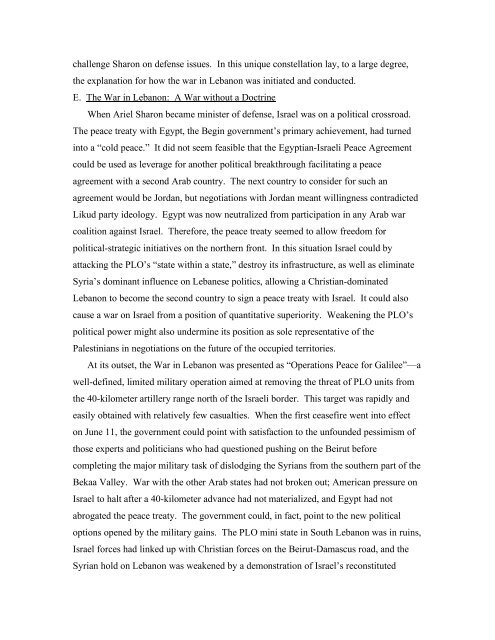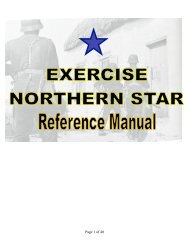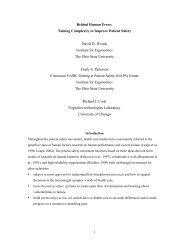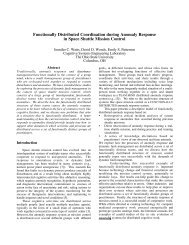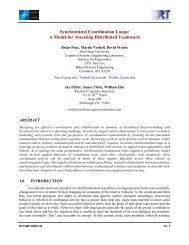Fundamental Surprises Zvi Lanir Decision Research 1201 Oak ...
Fundamental Surprises Zvi Lanir Decision Research 1201 Oak ...
Fundamental Surprises Zvi Lanir Decision Research 1201 Oak ...
- No tags were found...
You also want an ePaper? Increase the reach of your titles
YUMPU automatically turns print PDFs into web optimized ePapers that Google loves.
challenge Sharon on defense issues. In this unique constellation lay, to a large degree,<br />
the explanation for how the war in Lebanon was initiated and conducted.<br />
E. The War in Lebanon: A War without a Doctrine<br />
When Ariel Sharon became minister of defense, Israel was on a political crossroad.<br />
The peace treaty with Egypt, the Begin government’s primary achievement, had turned<br />
into a “cold peace.” It did not seem feasible that the Egyptian-Israeli Peace Agreement<br />
could be used as leverage for another political breakthrough facilitating a peace<br />
agreement with a second Arab country. The next country to consider for such an<br />
agreement would be Jordan, but negotiations with Jordan meant willingness contradicted<br />
Likud party ideology. Egypt was now neutralized from participation in any Arab war<br />
coalition against Israel. Therefore, the peace treaty seemed to allow freedom for<br />
political-strategic initiatives on the northern front. In this situation Israel could by<br />
attacking the PLO’s “state within a state,” destroy its infrastructure, as well as eliminate<br />
Syria’s dominant influence on Lebanese politics, allowing a Christian-dominated<br />
Lebanon to become the second country to sign a peace treaty with Israel. It could also<br />
cause a war on Israel from a position of quantitative superiority. Weakening the PLO’s<br />
political power might also undermine its position as sole representative of the<br />
Palestinians in negotiations on the future of the occupied territories.<br />
At its outset, the War in Lebanon was presented as “Operations Peace for Galilee”—a<br />
well-defined, limited military operation aimed at removing the threat of PLO units from<br />
the 40-kilometer artillery range north of the Israeli border. This target was rapidly and<br />
easily obtained with relatively few casualties. When the first ceasefire went into effect<br />
on June 11, the government could point with satisfaction to the unfounded pessimism of<br />
those experts and politicians who had questioned pushing on the Beirut before<br />
completing the major military task of dislodging the Syrians from the southern part of the<br />
Bekaa Valley. War with the other Arab states had not broken out; American pressure on<br />
Israel to halt after a 40-kilometer advance had not materialized, and Egypt had not<br />
abrogated the peace treaty. The government could, in fact, point to the new political<br />
options opened by the military gains. The PLO mini state in South Lebanon was in ruins,<br />
Israel forces had linked up with Christian forces on the Beirut-Damascus road, and the<br />
Syrian hold on Lebanon was weakened by a demonstration of Israel’s reconstituted


